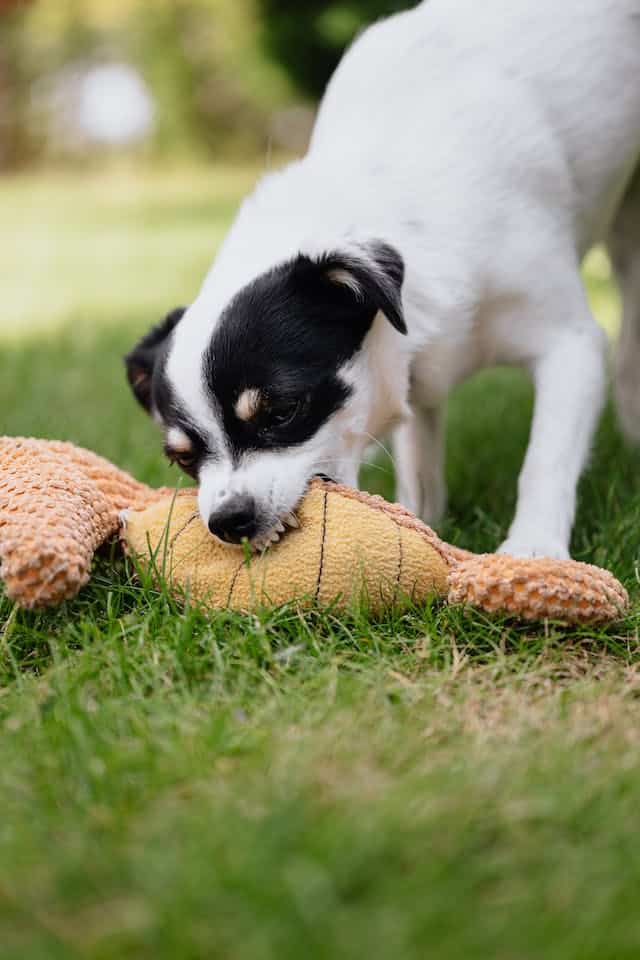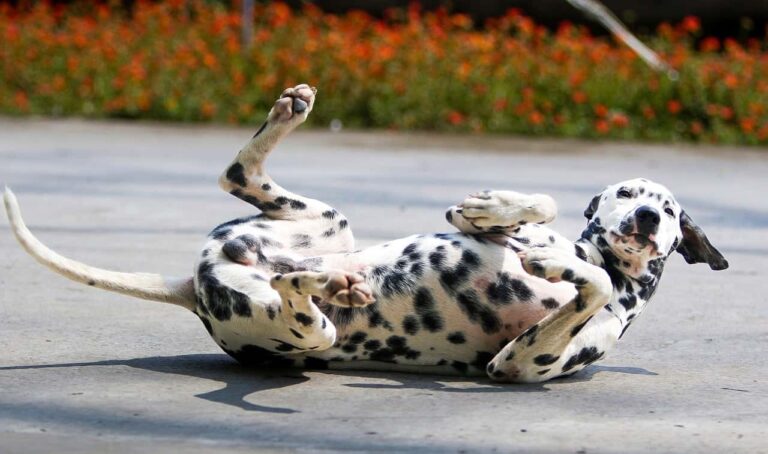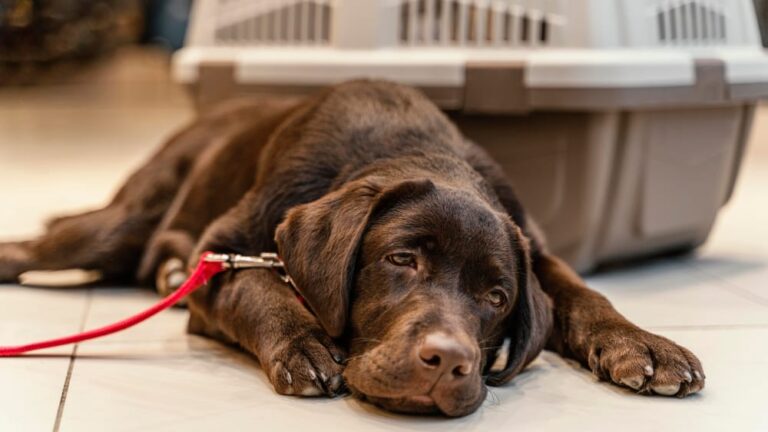Understanding and Addressing Dog Aggression with Toys : A Comprehensive Guide

Does your furry friend turn into a growling, snarling monster whenever you try to take away their favorite toy? Dog aggression with toys is a common issue that many pet owners face. This blog post will explore why dogs can become aggressive over their toys and how you can address this behavior. From understanding the underlying causes to implementing effective training techniques, we’ll provide valuable insights and tips to help you manage your dog’s toy aggression. So grab a squeaky toy, and let’s dive in!
Contents
- Key Takeaways
- What Is Possession Aggression in Dogs
- Sing of Possession Aggression in Dogs
- Why Do Some Dogs Display Possession Aggression
- How to Stop Dog Aggression with Toys
- Supervision
- Obedience Training
- Trade Up
- Playtime Boundaries
- Desensitization
- Professional Help
- Consistency
- Avoid Punishment
- Can possession aggression be cured?
- Conclusion
Key Takeaways
- Possessive aggression in dogs, also known as resource guarding, is When someone takes their toy or food, a dog becomes aggressive.
- Toy aggression is not a sign of being spoiled or dominant aggression but rather an innate survival skill that dates back to dogs’ wolf ancestors.
- Denying access to toys or asserting dominance can worsen possessive aggression in dogs.
- Techniques to stop possessive aggression in dogs include controlling the dog’s access to their favorite toy, training the dog to drop their toys, redirecting the dog’s attention with treats or new toys, and seeking professional help if home exercises are not effective.
What Is Possession Aggression in Dogs

As a dog, possession aggression means it will growl, snap, or bite to keep its resources from being taken. People who act this way may also be called protective or resource guarding.
Dogs can be possessively aggressive toward many things, not just valuable ones. Some dogs may be mean only to certain things, while others may be mean to anything they find in the house.
Possessive aggression is not the same as being spoiled or dominant. Dogs act this way because they have an innate desire to protect resources. Aggression can worsen over time if people don’t listen to the warnings.
To stop this, get professional help and change the way you behave. By dealing with possessive violence, we can ensure that dogs and people are safe and healthy.
Sing of Possession Aggression in Dogs
Possession aggression in dogs, also known as resource guarding, is when a dog becomes aggressive when it believes that someone or another animal is trying to take away something it considers valuable or a resource. The resource can be food, toys, a favorite spot, or any item the dog perceives as its possession. This behavior can vary in intensity, from mild warning signs like growling or snapping to more severe aggression like biting.
Signs of possession aggression in dogs may include:

- Growling: The dog may emit low growls when someone approaches its resource.
- Snapping: If the dog feels threatened, it may snap at the perceived threat without causing injury.
- Lunging: The dog may move aggressively towards the person or animal it perceives as a threat to the resource.
- Baring Teeth: Displaying teeth is a common sign of aggression and a clear warning.
- Stiff Body Language: The dog’s body may become tense and rigid, with a fixed stare.
- Elevated Hackles: Raised fur along the back of the neck and spine can indicate heightened arousal.
- Freezing: The dog may pause and stand still, assessing the situation before reacting.
- Resource Clenching: The dog may physically guard the resource by tightly holding or placing its body over it.
Why Do Some Dogs Display Possession Aggression
Dogs may display possessive aggression towards objects they perceive as valuable or everyday items found around the house. It is important to understand that possessive aggression is not a sign of being spoiled or dominant but rather a response to a perceived threat. By addressing the underlying causes and implementing proper training and socialization techniques, you can help manage and reduce possessive aggression in dogs. One dog in your home may never demonstrate possession aggression. One dog in your home may never show aggression. If you adopt another dog, fights over toys, food bowls, and territories may start.
| Factors Contributing to Possession Aggression |
|---|
| Genetic predisposition |
| Lack of socialization |
| Past negative experiences |

Read More:- Understanding behavior after neutering in Male Dogs
How to Stop Dog Aggression with Toys
Supervision
To effectively address toy aggression in dogs, proper supervision is crucial. By closely monitoring your dog’s behavior during playtime, you can identify any signs of possessive aggression or resource guarding. Here are three key reasons why supervision is essential:
- Early Intervention: Supervision allows you to intervene immediately if you notice aggressive behavior towards toys. Addressing the issue promptly can prevent it from escalating into more serious aggressive behavior.
- Safety: Supervision ensures the safety of everyone involved. It helps prevent potential harm to your dog, yourself, or others who may come into contact with the toy-aggressive dog.
- Training Opportunities: Supervision provides valuable training opportunities. You can gradually modify their possessive tendencies and promote positive interactions with toys by redirecting your dog’s attention during playtime and teaching them appropriate behaviors.
Obedience Training
Implement the Exchange Game as a valuable training technique to address dog toy aggression. This game involves teaching your dog to give up their toys for something of higher value. Here are three steps to teach your dog to stop possession aggression:
- Start by offering your puppy a toy and letting them play with it briefly.
- Then, show them a treat or another favorite toy and say “drop it” or “leave it” while offering the exchange item.
- When your dog drops the toy, praise them and give them the preferred item.
Repeat this exercise regularly, gradually increasing playtime duration before requesting the exchange. Teaching your dog that giving up a toy results in something better can help them overcome possessive behavior and promote a more harmonious relationship with toys.
Trade Up
One technique that can help is the “trade up” method. This involves offering your dog a more desirable toy or treats in exchange for the toy they are possessive over.
By using positive reinforcement and providing a better alternative, you can teach your dog that giving up their toy results in something even better. This helps address possessive aggression and promotes a more positive association with toys. Here is an example of how the trade-up method can be implemented:
| Possessive Toy | Trade Up Option | Result |
|---|---|---|
| Squeaky Ball | Tasty Treat | Dog willingly drops the ball for the treat |
Playtime Boundaries
Establish clear boundaries during playtime to effectively address and stop toy aggression in dogs. You can prevent possessive tendencies from escalating by teaching your dog appropriate playtime behavior. Here are three key strategies to stop possession aggression during playtime:
- Teach your dog the “drop it” command to encourage them to release toys willingly.
- Use positive reinforcement techniques, such as rewarding your dog with treats or praise for sharing their toys.
- Set consistent rules and boundaries during playtime to reinforce good behavior and discourage possessiveness.
Desensitization
To address toy aggression in dogs, start by implementing desensitization techniques. Desensitization involves gradually exposing your dog to the trigger that causes aggression, in this case, their toy, in a controlled and positive manner.
Here are three effective strategies to desensitize your dog and stop toy aggression:
- Start by introducing the toy at a distance where your dog feels comfortable and doesn’t display aggressive behavior.
- Reward your dog with treats and praise for calm behavior around the toy.
- Gradually decrease the distance between your dog and the toy, ensuring they remain calm and relaxed.
Professional Help
If desensitization techniques and training exercises at home are ineffective in addressing dog aggression with toys, it may be beneficial to ask for professional help. A professional dog trainer or behaviorist can provide expert guidance and support in managing possessive aggression in dogs.
A professional will assess your dog’s needs and design a customized training plan to address the toy aggression. They can teach effective techniques to modify your dog’s behavior and help you develop the necessary skills to handle the situation.
Remember, seeking professional help is not a sign of failure but a proactive step towards ensuring the well-being of your dog and creating a harmonious relationship.
Consistency
Consistency is key in your training approach to effectively address toy aggression in dogs. Maintaining a consistent routine can help your dog understand expected and unacceptable behaviors.
Avoid Punishment
Instead of punishing, address toy aggression in dogs by implementing positive reinforcement training techniques. Punishment can escalate possessive aggression in dogs and create fear and anxiety, exacerbating the problem. Instead, focus on rewarding desired behaviors and teaching your dog an alternative behavior to replace the aggressive response. Use treats, praise, and play as positive reinforcement when your dog displays calm and non-aggressive behavior around their toys. Gradually increase the difficulty by introducing distractions or decreasing the distance between your dog and their favorite toy.
Can possession aggression be cured?
Possession aggression in dogs can be managed and significantly improved with proper training and behavior modification techniques. While a complete cure may not always be possible, consistent and dedicated efforts can go a long way in addressing possessive aggression. Here are three key strategies to consider:

- Training and socialization: Training your dog can help redirect their focus and reduce possessive behavior. Additionally, early socialization with other dogs, animals, and humans can help them feel more comfortable and less threatened in various situations.
- Behavior modification exercises: Working with a professional dog trainer or behaviorist can provide guidance and support in implementing effective behavior modification exercises. These exercises aim to change your dog’s emotional response to possessive triggers and promote more positive behaviors.
- Creating a safe environment: By managing your dog’s access to valuable resources and providing a controlled environment, you can prevent conflicts over possessions and reduce opportunities for possessive aggression.
Conclusion
Understanding and addressing dog aggression with toys is important for creating a harmonious relationship with your furry friend. You can manage and potentially stop this challenging behavior by recognizing the signs and triggers of possessive aggression, implementing effective training techniques, and fostering a respectful environment.
Remember, with patience, consistency, and a commitment to your dog’s well-being, you can create a happier and healthier environment for you and your beloved canine companion.






